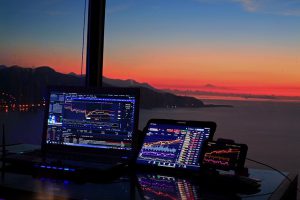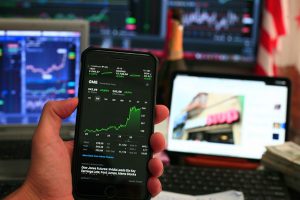
Editor: Vladimir Bajic | Tactical Investor
Unveiling the Mindset: Exploring the Permabear Doomster Perspective
Feb 29, 2024
Unveiling the Mindset: Exploring the Permabear Doomster Perspective
In the high-stakes chess game of investing, a faction of thinkers stands apart, often labelled as “permabear doomsters.” These modern-day Cassandras, akin to the sharpest and most astute minds like Warren Buffett’s caution or George Soros’s uncanny market foresight, gaze into the market’s depths with a sceptic’s eye. They are the soothsayers of economic downturns, the harbingers of market crashes, and the steadfast guardians against over-optimism. This article embarks on a journey through the psyche of the permabear doomster, armed with historical data and analytical rigour. We’ll dissect their grim prophecies, compare them with the market’s actual ebb and flow, and scrutinize the potential impact of their views on the broader investing landscape. Join us as we delve into the minds that challenge the bullish herd, offering a compelling counter-narrative to the unbridled optimism that often permeates Wall Street’s corridors.
The Permabear Doomster Mindset
Venturing into the stock market with the guarded gaze of a seasoned strategist, the permabear doomster embodies the epitome of caution. These vigilant sentinels of the financial world often evoke the discerning spirit of investing luminaries like Benjamin Graham, whose wisdom underscored the value of defence in uncertainty. With a worldview steeped in scepticism, the permabear doomster navigates the market’s turbulent seas, ever watchful for the storm clouds on the economic horizon.
Their perspective is a mosaic of meticulous analysis woven from threads of economic indicators, geopolitical tensions, and the cyclical nature of market behaviour. It is a tapestry that illustrates a financial ecosystem teetering on the edge of collapse, its every rally a prelude to an inevitable retreat. In their eyes, each surge in market indices is a siren’s song, luring the unwary closer to the jagged rocks of a market downturn.
For the permabear doomster, optimism is not a sign of hope but a harbinger of hubris. They view the euphoria of bull markets through the lens of historical precedents, invoking the cautionary tales of past crashes as evidence of the looming threat. The booms and busts punctuating market history are not mere episodes but rather a pattern, a recurrent reminder of the intrinsic volatility that defines the stock market.
This mindset is not simply a passive outlook but an active philosophy that shapes investment strategies. Like Ray Dalio, who navigates the economic landscape with principles that account for the dynamic interplay of forces, the permabear doomster seeks to fortify its portfolio against the shocks it perceives as inevitable. They view the market’s exuberance with the same critical eye that John Paulson did when he foresaw the subprime mortgage crisis, positioning themselves to weather the storms they foresee.
Yet, this unwavering belief in market fragility often leads to a rigidity that can be as much a hindrance as a help. By fixating on the spectre of collapse, the permabear may overlook the fertile ground of opportunity that periods of growth can offer. Their narrative is one of impending doom, a single-minded interpretation of market dynamics that risks dismissing the resilience and adaptability that have also characterized economic history.
Ultimately, the permabear doomster’s convictions are a stark reminder of investing’s dual nature: the interplay of fear and greed, risk and reward, and the delicate balance that must be struck to navigate the future’s uncertain waters. Their stance is a testament to the diversity of thought that keeps the market’s pulse alive, challenging the zeitgeist with a contrarian beat.
Historical Data Supporting the Doomster Outlook
The permabear doomster’s narrative is not without its historical chapters; each penned with the ink of market turmoil. They are the archivists of financial upheaval, their ledgers filled with the stark figures of past crashes that serve as cautionary tales for the future. The Great Depression of 1929, the Dot-com bubble burst of 2000, and the Global Financial Crisis of 2008 are not merely dates in history books but are milestones marking the path of market volatility that these cautious investors tread with wary steps.
These historical events are not just stories but the empirical evidence that fortifies the permabear’s fortress of scepticism. They argue that these seismic shifts in the market’s landscape are not random but cyclical predators lurking in the tall grass of economic growth, ready to pounce with devastating effect. The permabear doomster watches the horizon with the same intensity that a vigilant sentinel would, scrutinizing the ebb and flow of market valuations, debt levels, and margin debt, seeking signs of the following excellent correction.
In their analysis, every economic indicator is a potential harbinger of the downturn, and every geopolitical tension is a possible trigger for the next crash. They see the market’s exuberance as a mirage, a fleeting illusion that masks the underlying fragility of a system they believe is built on sand. Their conviction is that the market’s growth is a bubble on the verge of bursting, and they stand ready, not with a pin, but with a ledger to record its fall.
The permabear doomster’s mindset is a fortress built on the bedrock of historical precedent, each stone a market crash, each turret a failed financial institution. They are the chroniclers of market woes, their warnings a tapestry of past losses and future fears. Yet, in their focus on the potential for disaster, they also remind us of the importance of vigilance and the value of a diversified approach to investing that can weather the storms of market volatility and emerge resilient in the face of uncertainty.
Striking the Balance: Wisdom from the Market’s Maestros
Risk Mitigation: The permabear doomster’s approach, while often criticized for its relentless pessimism, does underscore the importance of risk management in investing. It’s a stark reminder that markets are not immune to sharp and painful downturns despite their long-term upward trajectory. The most successful investors in history, such as Benjamin Graham, the father of value investing, and his famed disciple Warren Buffett, have always emphasized the importance of margin of safety. This principle protects investors from significant losses during market downturns.
However, the permabear stance can be a double-edged sword. While it may shield investors during market corrections, it can also lead to missed opportunities during bull markets. Over the past 200 years, the stock market has shown a general upward trend, and those who have remained invested through the cycles have reaped the benefits. For instance, Peter Lynch, who managed the Magellan Fund at Fidelity Investments between 1977 and 1990, achieved an average annual return of 29.2%, capitalizing on the market’s overall upward trend by investing in a diverse range of stocks and not succumbing to perpetual bearishness.
Contrarian Opportunities: The permabear perspective can illuminate contrarian opportunities, where the market’s pessimism may lead to undervalued assets. Legendary investors like John Templeton excelled by buying at points of maximum pessimism and selling at moments of euphoria. However, Templeton also recognized the importance of a balanced view, understanding that markets tend to rise over time and that being a permanent bear could lead to significant underperformance.
In essence, while the permabear doomster mindset can be beneficial during certain phases of the investment cycle, investors must adopt a more nuanced approach. By combining the exemplary principles of permabears with the long-term optimism supported by historical market trends, investors can aim to protect their portfolios while still participating in the growth that equities can offer over time. This balanced approach can help investors navigate through the market’s many seasons, capturing the essence of what has made the likes of Buffett, Lynch, and Templeton among the best investors of their time.
Conclusion: Embracing Market Cycles with the Prudence of Investing Sages
The permabear doomster’s vigilance against market downturns starkly contrasts the enduring optimism that has characterized some of Wall Street’s most legendary figures. Peter Lynch’s “invest in what you know” philosophy led to unparalleled success by capitalizing on the market’s known potential. Warren Buffett’s adage to be “fearful when others are greedy, and greedy when others are fearful” reflects a deep understanding of market psychology and the value of contrarian thinking. And then there’s the wisdom of George Soros, who mastered the art of reflexivity, understanding that market participants influence asset prices in a feedback loop that can lead to periods of both undervaluation and overvaluation.
These titans of investing teach us that while caution is necessary, it must be balanced with the recognition that markets, over the long term, have a propensity to climb. They exemplify the philosophical approach of the Stoics, who believed in the virtue of balance. Just as the Stoics sought stability in the face of life’s vicissitudes, so must investors seek a middle path between fear and exuberance. This path acknowledges the cyclical nature of markets and their resilience and tendency to reach new heights over time.
The permabear doomster’s narrative, while grounded in historical caution, often overlooks the phoenix-like quality of markets to rise from the ashes of their own destruction. It is a narrative that, if followed too rigidly, can lead to the Sisyphean task of forever predicting a fall that, more often than not, is followed by a rise. Investors who embrace a philosophy that combines the caution of the permabear with the optimism of history’s most successful investors are likely to find a strategy that endures through market cycles, capturing growth while safeguarding against the inevitable downturns.
Ultimately, the most stunning conclusion is that the market reflects life itself—unpredictable, cyclical, and full of risk and opportunity. The investors who, like the Stoics, embrace this duality with both wisdom and humility and are most likely to achieve long-term success.
Other Interesting Reads

Visionary Views: How to Achieve Financial Freedom Before 40

A Major Problem with ESOPs is That Employees Can Lose Big

The Sophisticated Guide to Cryptocurrency Investing for Dummies PDF

Considering the Impact of Inflation, Why Is Investing Important for Long-Term Financial Stability?

What the NASDAQ Composite is Trading at in Today’s Market

What Is Contrarian Investing Unleashing Creative Perspectives

ETF Newsletter: Customized Options for Astute Investors

ETF Service Providers: In-House Options for the Tactical Investor

Fearlessly Trade Your Way to Financial Freedom

Unlocking Radiance: Hemp Benefits for Skin Illumination

Dow 30 Stocks: What Do They Reveal

Stock Market Psychology Cycle: Unveiling Trends and Tactics

Contrarian Thinking: The Power of Challenging the Status Quo

When Is the Stock Market Going to Crash: Anticipating the Unknown

The Israel Iran War: Evaluating the Case Against Military Action
Common Trading Mistakes: Sidestepping Pitfalls to Maximize Profits


